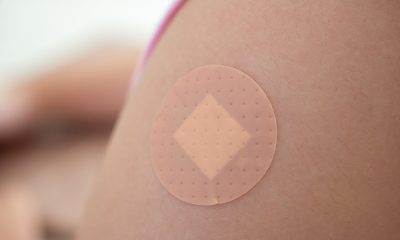News
Partnership sets out to improve AI-driven pregnancy support

The innovation arm of the Middle East’s largest medical centre has teamed up with a femtech firm to develop better AI-driven pregnancy monitoring technology.
ARC, the global health innovation engine and transformation arm of Sheba Medical Center, has announced a collaboration with remote pregnancy monitoring medtech Nuvo.
Their aim is to co-develop AI solutions that improve clinical decision-making and early detection of pregnancy complications.
Nuvo’s remote monitoring tech enables expectant mothers to track their pregnancy from home.
The collaboration will be led by Dr. Avi Tsur, an OB/GYN and high-risk pregnancy expert, and director of the Women’s Health Innovation Center at Sheba Beyond, Sheba’s virtual hospital.
From its base in Israel, Sheba aims to become one of the world’s first fully-integrated AI hospitals. It has other collaborations with top institutions like the Mayo Clinic in its work to integrate AI across departments.
Laurence Klein, CEO of Nuvo, said: “We are excited to embark on this collaborative commercial and research partnership with Sheba’s ARC, predicated on innovative, AI-driven modules powered by the INVU platform. ARC and Sheba Beyond’s global leadership in advancing remote and hybrid pregnancy care is invaluable, and we look forward to driving meaningful transformation together.”
Prof. Eyal Zimlichman, chief transformation and innovation officer and sirector of ARC at Sheba Medical Center, said: “Our partnership with Nuvo represents the future of pregnancy care. Integrating AI-powered solutions into routine prenatal monitoring not only enhances pregnancy outcomes but also demonstrates how technology can revolutionize healthcare worldwide.”
-

 Entrepreneur4 weeks ago
Entrepreneur4 weeks agoAI embryo selection tool wins European approval
-

 Hormonal health2 weeks ago
Hormonal health2 weeks agoOpinion: Not ‘just stress’ – How hormonal changes affect women’s brain function
-

 News4 weeks ago
News4 weeks agoTestosterone patch shows promise for menopausal women
-

 News3 weeks ago
News3 weeks agoTop 7 drug-free solutions for managing PMS and PMDD in in 2025
-

 Features4 weeks ago
Features4 weeks agoFrom SEO to GEO: How women’s health brands can get found in the age of AI
-

 Menopause4 weeks ago
Menopause4 weeks agoFDA approves new menopause drug to treat hot flashes and night sweats
-

 News4 weeks ago
News4 weeks agoSpain faces protests over mammogram scandal
-

 Hormonal health4 weeks ago
Hormonal health4 weeks agoMost midlife women with menopause symptoms don’t seek care, research finds































